IGFBP4
-
Official Full Name
insulin-like growth factor binding protein 4 -
Overview
This gene is a member of the insulin-like growth factor binding protein (IGFBP) family and encodes a protein with an IGFBP domain and a thyroglobulin type-I domain. The protein binds both insulin-like growth factors (IGFs) I and II and circulates in the plasma in both glycosylated and non-glycosylated forms. Binding of this protein prolongs the half-life of the IGFs and alters their interaction with cell surface receptors. -
Synonyms
IGFBP4;insulin-like growth factor binding protein 4;BP-4;IBP4;IGFBP-4;HT29-IGFBP;insulin-like growth factor-binding protein 4;IBP-4;IGF-binding protein 4;Insulin-like growth factor-binding protein 4
Recombinant Proteins
- Human
- Rat
- Rhesus macaque
- Chicken
- Mouse
- Pig
- Cynomolgus
- HEK293
- Mammalian Cells
- E.coli
- Yeast
- Insect Cells
- Human Cells
- His
- Avi
- Fc
- Non
- T7
- DDK
- Myc
- Flag
Background
What is IGFBP4 protein?
IGFBP4 (insulin like growth factor binding protein 4) gene is a protein coding gene which situated on the long arm of chromosome 17 at locus 17q21. This gene is a member of the insulin-like growth factor binding protein (IGFBP) family and encodes a protein with an IGFBP domain and a thyroglobulin type-I domain. The protein binds both insulin-like growth factors (IGFs) I and II and circulates in the plasma in both glycosylated and non-glycosylated forms. Binding of this protein prolongs the half-life of the IGFs and alters their interaction with cell surface receptors. The IGFBP4 protein is consisted of 258 amino acids and its molecular mass is approximately 27.9 kDa.
What is the function of IGFBP4 protein?
IGFBP4 is a multifunctional protein whose main function is to regulate the biological activity of insulin-like growth factor (IGF). By binding to IGF with high affinity, it regulates the concentration and bioavailability of IGF in extracellular matrix, thereby affecting the effects of IGF on cell proliferation, differentiation and apoptosis. In addition to regulating IGF activity, IGFBP4 also has independent biological activities, such as promoting cell migration, inhibiting tumor growth, and promoting tissue repair.
IGFBP4 Related Signaling Pathway
In the IGF signaling pathway, IGFBP4 can act as either a terminal inhibitor or a promoter, affecting the ability of IGF-I and IGF-II to bind to their receptors, depending on their concentration and modification status in the extracellular environment. Studies have shown that IGFBP4 can interact with TGF-β signaling pathway and affect cell growth and differentiation. At the same time, it is also involved in the PI3K/Akt and MAPK/ERK signaling pathways, Wnt/ β-catenin signaling pathways.
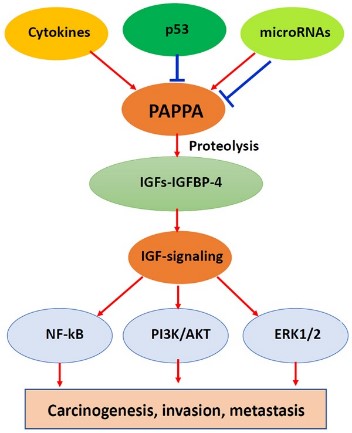
Fig1. Illustration of the biological functions of PAPPA and signaling pathways in carcinogenesis, invasion and metastasis. (Yongchen Guo, 2018)
IGFBP4 Related Diseases
The IGFBP4 protein is associated with a variety of diseases, including cancer, diabetes, cardiovascular disease, osteoporosis, and more. In terms of tumor, IGFBP4 has been found to inhibit the growth and metastasis of tumor cells, so it is expected to become a new target for tumor therapy. In the field of diabetes, IGFBP4 is believed to be involved in the occurrence and development of insulin resistance and may have potential value for the prevention and treatment of diabetes. In addition, IGFBP4 is also associated with the occurrence and development of cardiovascular diseases and osteoporosis, but the specific mechanism needs to be further studied.
Bioapplications of IGFBP4
IGFBP4 is expressed at different levels in different types of cancer, including breast cancer, prostate cancer, and neuroblastoma. Research is exploring the possibility of IGFBP4 as a potential biomarker for cancer diagnosis, prognostic assessment, and therapeutic response monitoring. It could also be used as a biomarker or therapeutic target for these diseases.
Case Study
Case Study 1: Ying-Ying Lee, 2018
Genomic sequencing of hepatocellular carcinoma (HCC) uncovers a paucity of actionable mutations, underscoring the necessity to exploit epigenetic vulnerabilities for therapeutics. In HCC, EZH2-mediated H3K27me3 represents a major oncogenic chromatin modification, but how it modulates the therapeutic vulnerability of signaling pathways remains unknown. Here, we show EZH2 acts antagonistically to AKT signaling in maintaining H3K27 methylome through epigenetic silencing of IGFBP4. Functional characterizations demonstrated potent growth- and invasion-suppressive functions of IGFBP4, which was associated with transcriptomic alterations leading to deregulation of multiple signaling pathways. Mechanistically, IGFBP4 stimulated AKT/EZH2 phosphorylation to abrogate H3K27me3-mediated silencing, forming a reciprocal feedback loop that suppressed core transcription factor networks (FOXA1/HNF1A/HNF4A/KLF9/NR1H4) for normal liver homeostasis. Consequently, the in vivo tumorigenicity of IGFBP4-silenced HCC cells was vulnerable to pharmacological inhibition of EZH2, but not AKT.
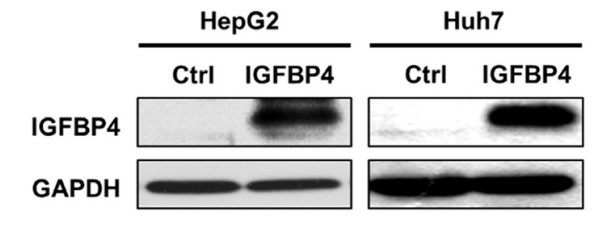
Fig1. Western blot analysis of HepG2 and Huh7 cells transiently transfected with empty vector or IGFBP4-expression plasmid.
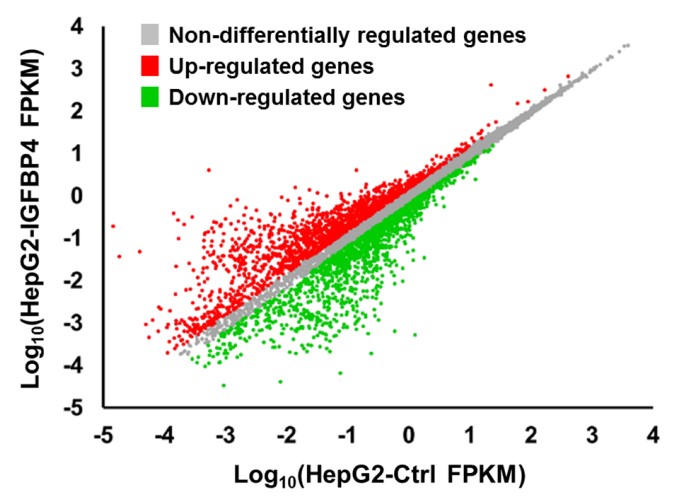
Case Study 2: Wenhu Chen, 2023
Breast cancer (BC) is the most frequent malignant tumor in women worldwide with exceptionally high morbidity. The RNA-binding protein MEX3A plays a crucial role in genesis and progression of multiple cancers. The researchers attempted to explore its clinicopathological and functional significance in BC in which MEX3A is expressed. MEX3A and IGFBP4 profile data of BC patients were downloaded from TCGA and GEO database. Western Blot, CCK-8, EdU, colony formation and flow cytometry were performed to investigate the role of MEX3A and IGFBP4 in BC cell proliferation, invasion and cell cycle in vitro. The interactions among MEX3A and IGFBP4 were measured by RNA pull-down and RNA immunoprecipitation. The expression of IGFBP4 was significantly negatively correlated with MEX3A in BC tissues. Mechanistic investigation showed that MEX3A binds to IGFBP4 mRNA in BC cells, decreasing IGFBP4 mRNA levels, which further activated the PI3K/AKT and other downstream signaling pathways implicated cell cycle progression and cell migration.
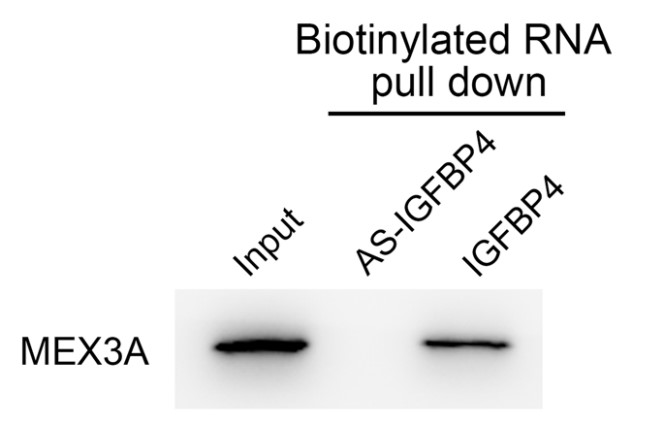
Fig3. RNA pull-down assay and western blot analysis of the specific association of MEX3A proteins with IGFBP4 revealed that biotinylated IGFBP4 could bind to MEX3A.
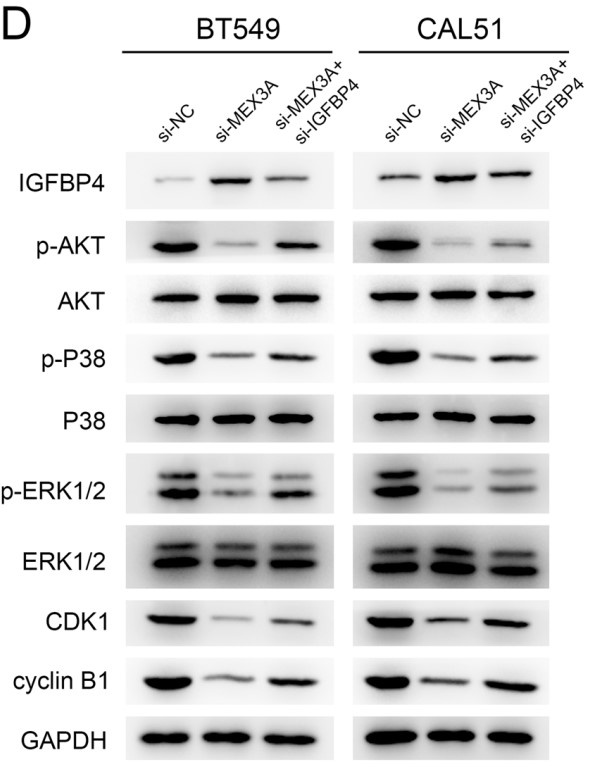
Quality Guarantee
High Purity
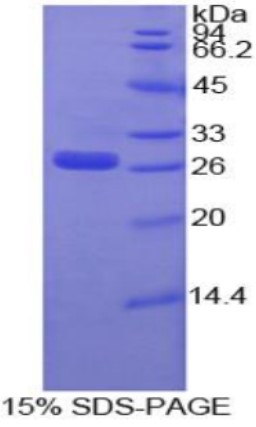
Fig1. SDS-PAGE (IGFBP4-832H) (PROTOCOL for western blot)
High Bioactivity
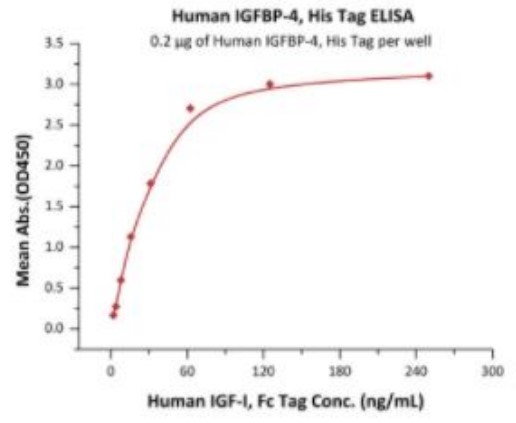
Fig2. Activity Data. (IGFBP4-205H)
Involved Pathway
IGFBP4 involved in several pathways and played different roles in them. We selected most pathways IGFBP4 participated on our site, such as Metabolism of proteins,Myometrial Relaxation and Contraction Pathways,Regulation of Insulin-like Growth Factor (IGF) transport and uptake by Insulin-like Growth Factor Binding Proteins (IGFBPs), which may be useful for your reference. Also, other proteins which involved in the same pathway with IGFBP4 were listed below. Creative BioMart supplied nearly all the proteins listed, you can search them on our site.
| Pathway Name | Pathway Related Protein |
|---|---|
| Regulation of Insulin-like Growth Factor (IGF) transport and uptake by Insulin-like Growth Factor Binding Proteins (IGFBPs) | KLK13,IGFBP2B,IGFBP5A,IGFBP2A,IGFBP6B,PAPPA2,IGFBP6A,GZMH,IGFALS,IGFBP5 |
| Wnt signaling network | WIF1,ATP6AP2,RYK,RSPO1,CTHRC1 |
| Metabolism of proteins | LTF,TFG,MPDU1,NAPAB,F9B,PIGK,NSMCE1,NEU3,SSPO,IGFBP2B |
| Myometrial Relaxation and Contraction Pathways | RAMP2,IGFBP2,PKIB,PKIG,RGS10,RGS7,RGS6,CNN2,GABPB1,GPR182 |
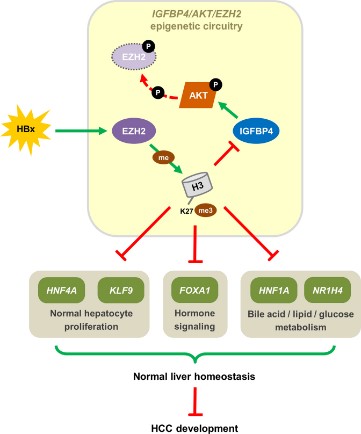
Fig1. The mechanistic pathway of IGFBP4/AKT/EZH2 epigenetic circuitry. (Ying-Ying Lee, 2018)
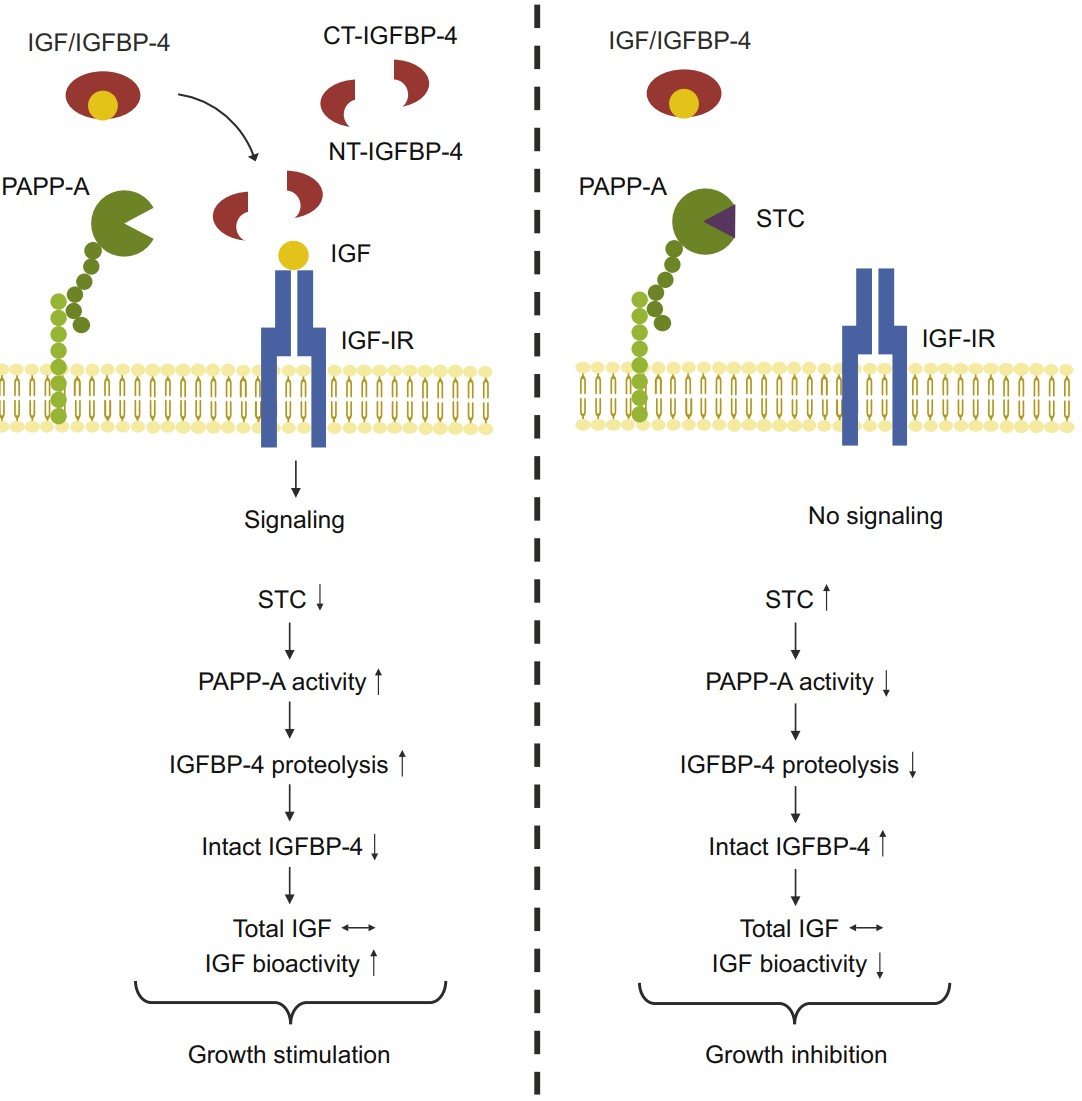
Fig2. Regulation of IGF bioactivity by the IGFBP-4/PAPP-A/STC axis. (Rikke Hjortebjerg, 2018)
Protein Function
IGFBP4 has several biochemical functions, for example, insulin-like growth factor I binding,insulin-like growth factor II binding. Some of the functions are cooperated with other proteins, some of the functions could acted by IGFBP4 itself. We selected most functions IGFBP4 had, and list some proteins which have the same functions with IGFBP4. You can find most of the proteins on our site.
| Function | Related Protein |
|---|---|
| insulin-like growth factor II binding | IGFBP6A,IGFBP6B,IGFBP5A,INSR,IGFBP5,IGFBP2B,IGFBP1A,IGFBP2A,IGFBP3,IGFBP2 |
| insulin-like growth factor I binding | IGFBP6A,IGFBP2,IGFBP5A,IGFBP2A,IGFBP1B,IGFBP5,IGFBP6B,IGFBP6,INSR,IGFBP2B |
Interacting Protein
IGFBP4 has direct interactions with proteins and molecules. Those interactions were detected by several methods such as yeast two hybrid, co-IP, pull-down and so on. We selected proteins and molecules interacted with IGFBP4 here. Most of them are supplied by our site. Hope this information will be useful for your research of IGFBP4.
SUV39H1;KDM1A;q81l39_bacan
Resources
Research Area
Related Services
Related Products
References
- Khsheibun, R; Paperna, T; et al. Gene Expression Profiling of the Response to Interferon Beta in Epstein-Barr-Transformed and Primary B Cells of Patients with Multiple Sclerosis. PLOS ONE 9:-(2014).
- Ivanov, VN; Ghandhi, SA; et al. Radiation response and regulation of apoptosis induced by a combination of TRAIL and CHX in cells lacking mitochondrial DNA: A role for NF-kappa B-STAT3-directed gene expression. EXPERIMENTAL CELL RESEARCH 317:1548-1566(2011).
Reviews
The material worked in our experiments, and we were able to accomplish everything we needed with material provided.


